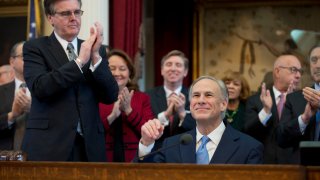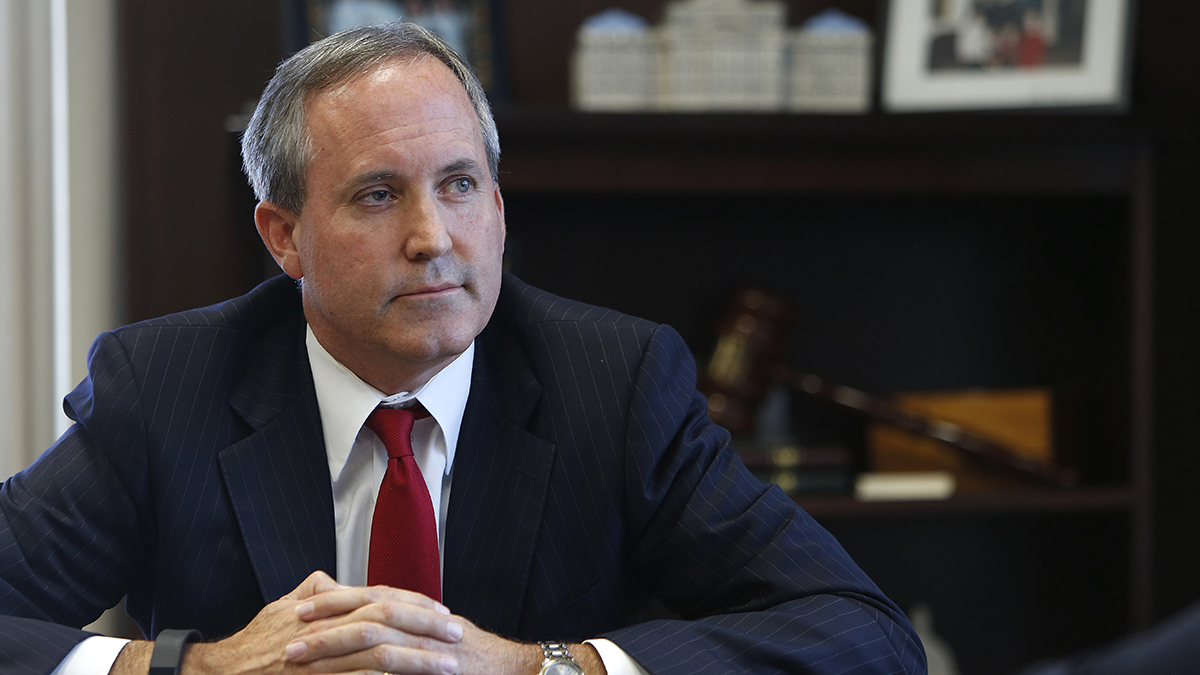
In eight years as arguably the most conservative “Big Two” in Texas history, Gov. Greg Abbott and Lt. Gov. Dan Patrick have achieved an uneasy peace. The two Republican leaders rarely clash in public and they’ve increasingly avoided conflict by doubling down on the unique — and quite different — duties the state Constitution prescribes for them.
Abbott glad-hands with corporate titans as the state’s economic development cheerleader and has a closet full of khaki first-responder shirts with Texas seals as pocket insignias, for his travels as the disaster-response leader. Patrick immerses himself in the details of legislation and micromanages the Senate as the Capitol’s policy wonk-in chief.
Some have likened them to an old married couple who, lacking personal rapport and affection, spend as much time as possible in separate wings of the house. But the lieutenant governor is a more powerful position in Texas than in almost any other state, making tensions all but inevitable.
And when the Legislature comes to town, as it does starting Tuesday, Abbott and Patrick are likely to jostle over who’s the agenda-setter with the best vision for the state – and, not incidentally, a game plan for keeping the state GOP in power for another generation.
Get DFW local news, weather forecasts and entertainment stories to your inbox. Sign up for NBC DFW newsletters.
“I would classify them as political ‘frenemies,’” said University of Houston political scientist Brandon Rottinghaus. “They’re not enemies, not friends. They’re a hybrid. … You wouldn’t see them buying a time-share together – they’re not personally close, even if politically, they generally are on the same page.”
The relationship is important because the Legislature “is a sensitive organism,” and its work product suffers if the majority party is riven by dissent and infighting, Rottinghaus observed. “The party needs to have at least a modicum of unity” to get things done, he said.
In this year’s session, there’s much they’ll agree on. The two are likely to concur that the state should devote a sizable chunk of its $27 billion surplus to cut school property taxes, while holding back many billions in reserve, in case of recession.
Texas Politics
Covering politics in the Lone Star State.
If the past is any guide, the two top leaders may differ privately on how to rank-order some “one-time investments,” such as winning voter approval to use surplus money to build or renovate more mental hospitals versus replenishing flood-mitigation and water-supply funds.
But, just as likely, they may resolve those behind closed doors, in consultation with the House, and not air any such differences in public. Much of the outline of the two-year state budget is decided upon in the fall before a session, in little-noticed joint budget hearings conducted mostly by staff members, not politicians.
Neither Abbott nor Patrick agreed to be interviewed. In public remarks over the years, they’ve swapped nothing but compliments.
“We are a great team,” Patrick told reporters five years ago, at a news conference he called to quash speculation he might run against Abbott in 2018. “I’m not running against Greg Abbott, not in ‘18, not ever.”
Patrick added, “We work well together. We agree 96%, 97% of the time – I can’t even name the 3% we don’t.”
Last month, when asked if he and Abbott were at odds over electricity-grid fixes, Patrick downplayed the conflict.
“Let’s not start the session, since you’re covering the Capitol, trying to divide the governor and I because we are on the same page on almost all these issues,” he said in a session-preview conversation that aired on Austin’s KXAN-TV on Jan. 1.
To read the full article, visit our partners at the Dallas Morning News.


